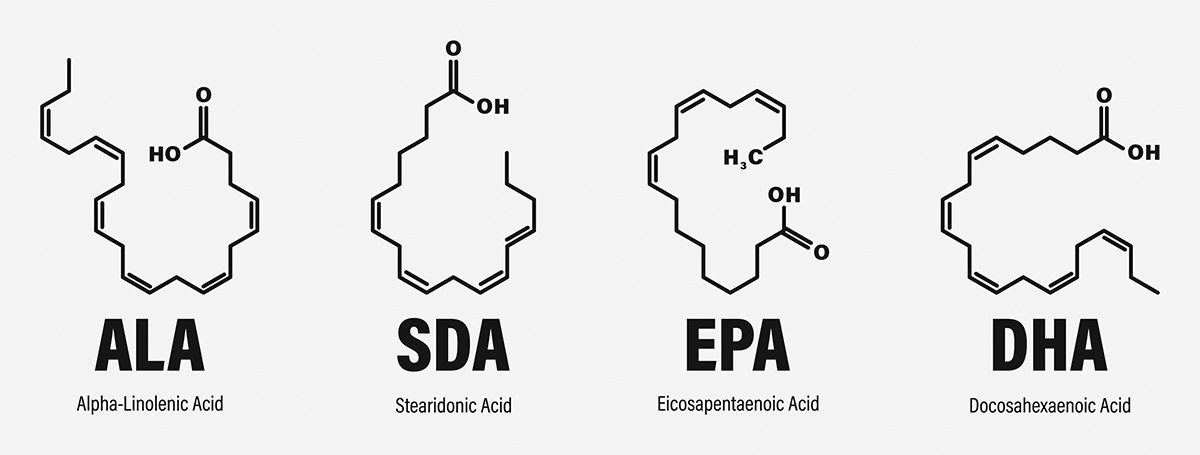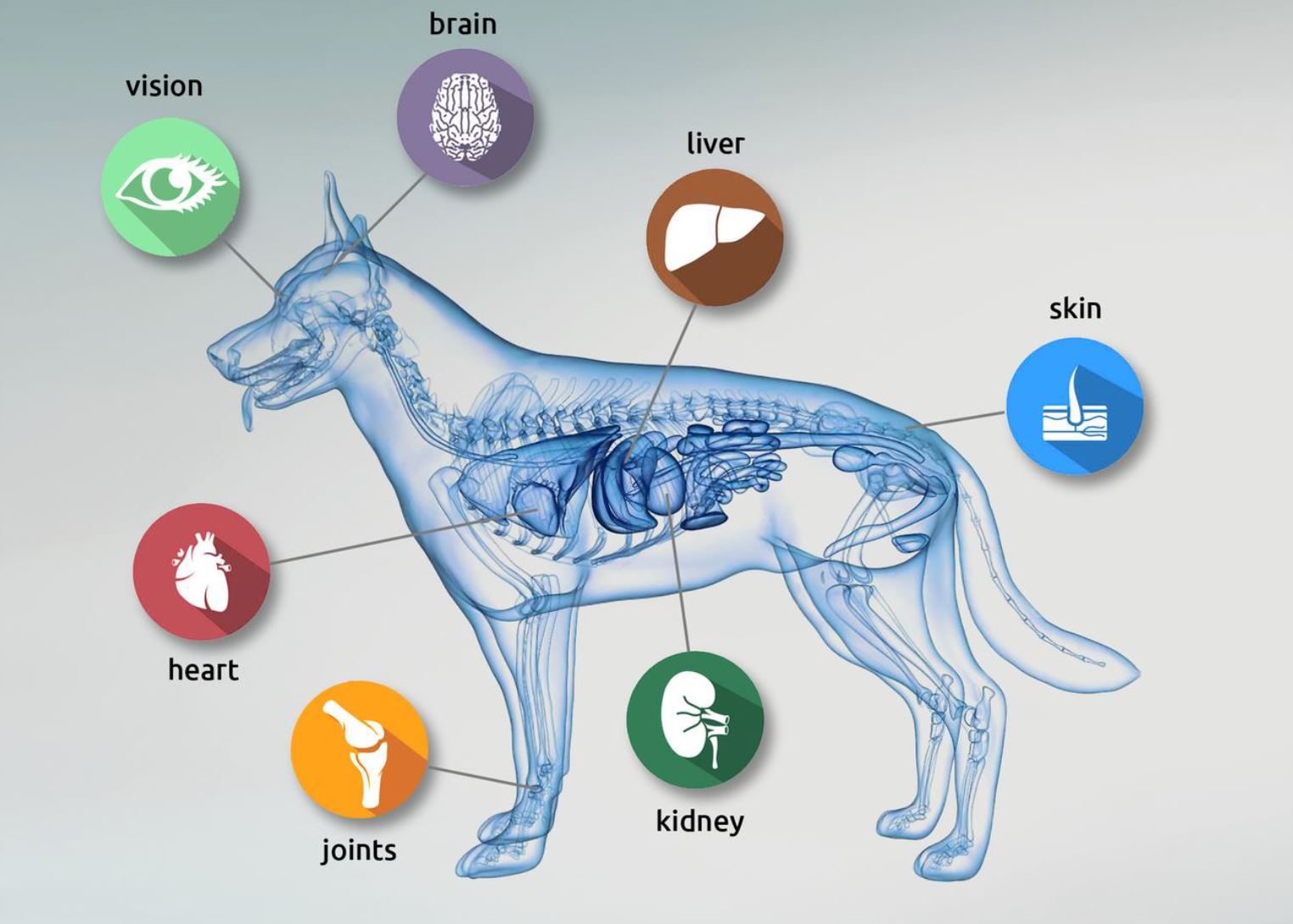This is Part One of a two-part series on Omega 3 ingredients in the pet nutrition space. Continue reading about Omega alternatives in Part Two here.
Health-promoting ingredients have taken center stage in the pet food space in recent years as pet parents look to nutrition to assuage ailments and reinforce overall health and wellness in their four-legged family members. To this end, today’s pet owners are more likely to conduct research, read ingredient labels, and seek out products with specific ingredients they recognize as providing a benefit. In fact, according to Amsterdam-based Corbion, 85% of pet owners in Europe and North America read ingredient lists as part of their pet food purchasing decisions.
One of these ingredients is fish oil, commonly known in the human supplement space to reduce inflammation, lower blood pressure, manage joint pain and support skin health through the delivery of Omega 3 fatty acids. And like many other pet health trends, this sentiment about fish oil has trickled down to apply to our dogs and cats.
According to a January 2024 report by MarketPlace, Omega 3 and 6 fatty acids were ranked No. 6 in a list of 19 ingredients pet parents associate with positive health benefits in 2023, outperforming CBD, glucosamine, collagen, prebiotics and chondroitin. Additionally, of the 765 pet parents surveyed, 69% said seeing Omega 3 on an ingredient list would influence their purchase consideration, second only to vitamin D with 70% of respondents.
Essential Omega 3 fatty acids include alpha-linolenic acid (ALA), eicosapentaenoic acid (EPA), docosahexaenoic acid (DHA) and stearidonic acid (SDA), among others. ALA and SDA, along with Omega 6 fatty acid gamma-linolenic acid (GLA), are commonly found in plant-based sources, while EPA and DHA are most widely sourced through fatty fish and other marine ingredients.
 Source: ©TANYA MISCHENKO – STOCK.ADOBE.COM
Source: ©TANYA MISCHENKO – STOCK.ADOBE.COMALA and SDA are both precursors of EPA and DHA, meaning pets can synthesize the two long-chain fatty acids on their own through the digestion of ALA and SDA. However, according to Jennifer Adolphe, Ph.D., pet technical services manager at ADM, Chicago, these natural conversion rates are relatively low.
For this reason, pets that need Omega 3s for therapeutic reasons may be better off getting them from marine sources, like fish oil or microalgae, as they are more efficient sources of both EPA and DHA, suggested Patrick Backowski, director at Anchor Ingredients, Fargo, ND. But for pet owners simply looking to boost their pets’ overall health through Omega 3 supplementation, alternative sources could prove to deliver the benefit without straining the environment.
But first, how exactly do Omega 3s support pet health and wellness?
Pet health benefits of Omega 3s
EPA and DHA have several proven benefits both for people and pets. For dogs and cats specifically, research has shown these two Omega 3s support various areas of health and wellness including skin and coat health, join health, inflammation management, a healthy gut microbiome, and normal metabolic functions.
“Simply put, they help our pets look well, move well and feel well,” said Andrew Hebard, chief executive officer and founder of Natures Crops International, Winston-Salem, NC.
“When animals metabolize Omega 3s, they produce a large array of metabolites that all contribute to optimal health and wellness and, without them, well-documented deficiency symptoms can appear, such as dry, flaky, itchy skin and poor joint health and mobility,” he continued. “So, Omega 3s are not just essential for health and wellness, they are regenerative to health — correcting conditions attributable to insufficient or imbalanced intakes.”
Another salient health perk of DHA is cognitive health, the importance of which is becoming increasingly pertinent for supporting pets at specific life stages.
“If you look at the literature, there’s a very clear link to brain health, especially with DHA, which plays an important role in cognitive development of young animals and also senior pets,” said Luc Steenwelle, business director, animal nutrition, algae, Corbion.
 Source: IQI Trusted Petfood Ingredients, Corbion
Source: IQI Trusted Petfood Ingredients, CorbionAdolphe agreed, adding DHA plays an important role in the development of the immune system in growing pets, as well as retinal function. She also noted it’s important to strike a balance between Omega 3 and Omega 6 in a pet’s diet, as too much Omega 6 can result in undue inflammation.
“The role of these fatty acids in maintaining pet health is affected not only by their ratio but also by the total amount in the diet,” Adolphe explained. “Achieving a balance between Omega 3 and Omega 6 fatty acids is essential for pet foods since their metabolic conversion within the body impacts inflammation levels. Omega 3 fatty acids are known to have anti-inflammatory properties, which counterbalance the potentially inflammatory properties of Omega 6 fatty acids.”
With all these health benefits to behold, it’s no wonder pet owners are increasingly seeing Omega 3 fatty acids as a way of supplementing the health and wellbeing of their furry companions. However, an influx of demand together with the impacts of climate change and overfishing have put a strain on the global fish oil supply, leading pet industry ingredient innovators to explore alternative sources.
A floundering fish oil market
Fish oil is a byproduct of fishing operations — as long as people consume fish, there will be suppliers upcycling fishery byproducts into products like fish oil for humans and pets. While this is an inherently sustainable process, overfishing and climate change have become central threats to wild-caught operations.
Not all fish oil is created equal, and the need for alternative sources of Omega 3 fatty acids has become more apparent as demand for fish oil grows — not only for pets, but for aquaculture feed and humans, too — alongside stagnating and even declining supply, according to Geert van der Velden, innovation manager at IQI Trusted Petfood Ingredients, Amersfoort, The Netherlands.
“The supply of fish oil is stable, at best,” he said.
According to the Food and Agriculture Organization (FAO), 90% of the world’s marine fish stocks were fully exploited, overexploited or depleted as of 2022. To help alleviate this issue, van der Velden advocates for combining fish oil with alternative sources of Omega 3 fatty acids to optimize the balance of EPA and DHA delivered to the pet, help brands deliver on Omega 3 claims with more reliability and transparency, and avoid adding even more pressure to an already fishy supply.
Relying on fish oil alone to meet growing demand for Omega 3s is not only unsustainable from an environmental standpoint, but also from an economic one, Hebard noted.
“Fish oil and the wild fish it comes from is a finite and, in many ways, a precious commodity facing increasing economic and environmental pressures,” he said. “Supply has become increasingly unreliable, and prices have risen by as much as 500% in the past 12 months. What a lot of people don’t realize is that the net yield of fish oil from these species [anchovies, menhaden and sardines] is often less than 1%, and rising sea temperatures are lowering their fat content even further. Think about that for a minute — harvesting over 20,000 kgs of fish to make less than one drum of oil. This is why we have to explore alternatives.”
“It's not realistic to have such an essential health ingredient reliant on such a vulnerable source when there are such good alternatives,” said Andrew Hebard, Natures Crops International.
Alongside sustainability, consumers have other reasons for seeking out non-fish oil sources of Omega 3s. For example, some pets may have sensitivities to fish-based ingredients, Backowski shared, and some pet owners may prefer plant-based solutions that allow them to feed their pets’ vegetarian diets, Adolphe added.
Additionally, an increasing number of consumers are prioritizing transparency in their product purchasing decisions, with 76% of grocery shoppers in the United States today agreeing that transparency is important, up from 69% in 2018. A slipping supply of raw materials faced with rising demand creates a opportunities for bad actors to engage in economically motivated fish oil fraud. This is beneficial for neither pets, nor people.
“Globally, according to various reports, the Omega 3 industry at retail is reported to be in excess of $5 billion, with approximately 95% of the raw material coming from fish oil,” Hebard added. “Our oceans are largely tapped out as a source to meet current — let alone new — demand, and with environmental issues such as climate change and pollutants, I think it’s incumbent on all of us involved in this industry to work collectively and collaboratively to find robust and enduring solutions.”
This is Part One of a two-part series on Omega 3 ingredients in the pet nutrition space. Continue reading about Omega alternatives in Part Two here.


